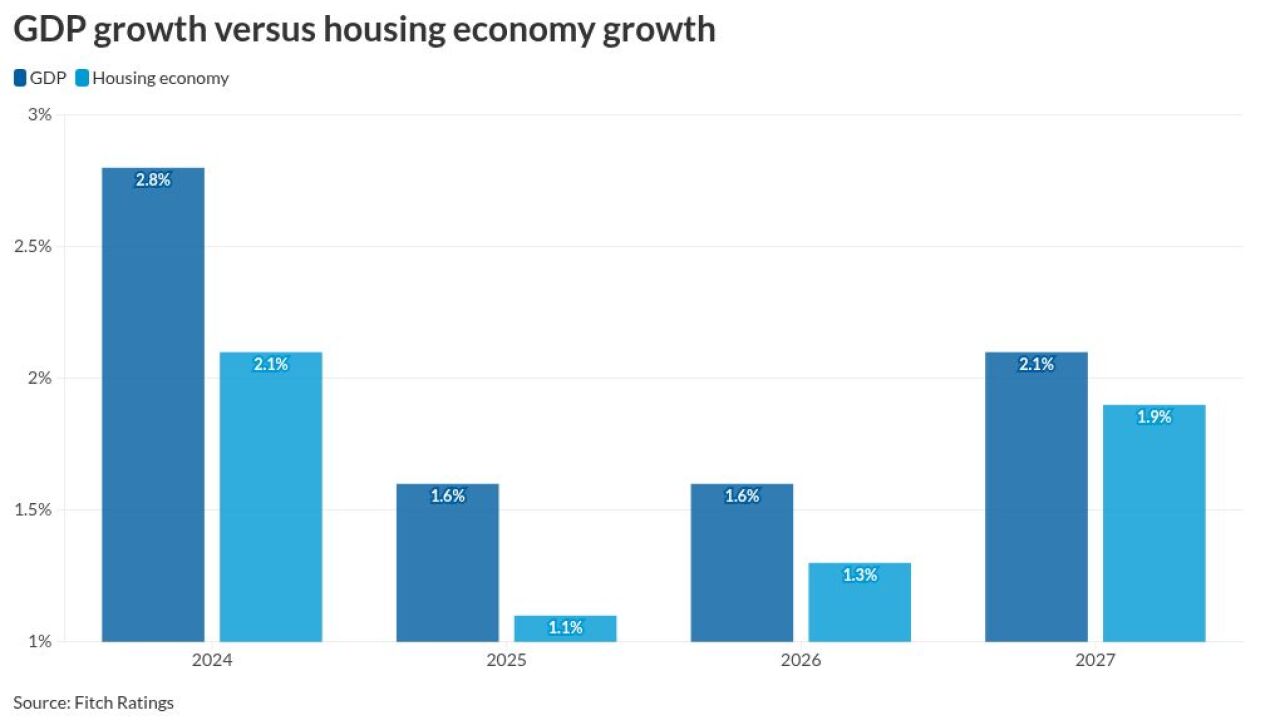Industry observers are expecting 2022 production to decline for several segments of the asset-backed securitization (ABS) market, amid escalating Target Federal Funds Rates and historically high inflation that conflate to impact pricing and execution.
For commercial ABS, which includes subsectors such as aviation, equipment loans and whole business, observers expect 2022 production to come in at $84.6 billion, a 13% decrease compared with 2021.
The declining production numbers is not for want of issues with strong credit profiles. Credit performances that have been stellar in some cases, according to analysts.
"Equipment delinquencies and losses have decreased on all measures," Eric Neglia, a senior managing director at Kroll Bond Rating Agency, and head of the rating agency's commercial and consumer ABS said during an outlook presentation on Monday.
The aviation sector was already grappling with a couple of challenges heading into 2022, notably travel bans stemming from efforts to curb the spread of the COVID-19 virus. Just as leisure and business travelers began to return to the skies, however, Russia invaded the Ukraine in TK, subsequently trapping airline leased assets, keeping the majority of transactions' debt service coverage ratios (DSCRs) below 1.0x in 2022.
While the 2023 yearend picture is still far away, observers expect trends similar to 2022 to unfold.
"We expect issuance volume to decline in 2023 to $80.5 billion, a 5% decline, owing to the effects of an increase in interest rates and a decline in equipment ABS off of previous record levels, according to KBRA analysts.
KBRA expects the airline sector to continue to recover in 2023, as securitizations with assets that have little or no exposure to Russia will experience DSCRs that increase, slowly, to above 1.0x.
"Whole business securitization performed very well," Eric Neglia, a senior managing director at Kroll Bond Rating Agency, and head of the rating agency's commercial and consumer ABS.
In the WBS sector assets generally fall within restaurant and non-restaurant categories. Deals secured by revenue from restaurant brands posted continued systemwide sales growth in 2022, reaching about $2.9 trillion by Q2 2022, the most recent data available. Securitization DSCRs have dropped to below 4.0x in 2022, but remained elevated from a historical perspective. In 2018 and 2019, for instance, restaurant DSCRs averaged around 3.5x, looking back four quarters.
DSCRs and system-wide-sales saw meaningful declines among securitizations backed by non-restaurant assets in the early part of the pandemic, KBRA found. Those metrics had recovered mostly by mid-2021, however. In 2022, DSCRs remained relatively flat, and SWS had modest gains, according to KBRA.
As for next year's prospects for the whole business securitization sector, Neglia added that "dependent on interest rates. This could be an attractive market for new issuers."






